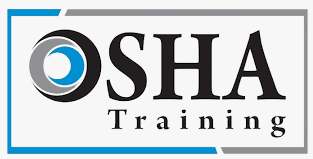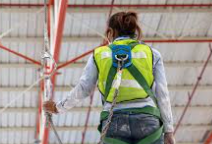
Why Your Facility Needs an NFPA 1620 Pre-Incident Plan — And Why the Fire Department Must Help Build It
In the world of industrial safety, few documents carry as much practical weight as a well-executed pre-incident plan (PIP). When seconds matter during a fire, chemical release, or explosion, first responders don’t have time to “figure things out” on scene. That’s exactly why the National Fire Protection Association created NFPA 1620: Standard for Pre-Incident Planning.

Responding to a Potential Natural Gas Leak: Investigation, Monitoring, and Emergency Planning
Natural gas is one of the most common fuels used in manufacturing, food service, and building operations — but it’s also one of the most misunderstood hazards. Even small leaks can pose serious risks if not handled systematically. A strong response and investigation protocol protects people, property, and compliance standing with OSHA and NFPA requirements.

When Lockout Isn’t Feasible: Understanding Alternate Methods of Energy Control
On October 21, 2024, OSHA issued a letter of interpretation titled “Lockout/Tagout (LOTO) Feasibility and ‘Alternative Methods’”.In that letter, OSHA addressed a question concerning when power must remain required for set-ups or change-over tasks (e.g., inching/jogging operations) and whether a true “alternative method” to energy isolation was allowed.

Winter Parking Lot Safety: Why a Flash Freeze Plan Matters as Much as Snow Removal
Most businesses have a snow removal plan — but few have a flash freeze response plan. That gap can be costly. A sudden temperature drop can turn wet pavement into black ice in minutes, creating dangerous conditions for workers, visitors, and vehicles before a plow or salter even arrives.

Why Most Job Hazard Analyses (JHAs) Miss the Mark — and How to Do Them Right
If you’ve ever read a JHA that listed “PPE” as the only control, you already know the issue. Most Job Hazard Analyses fail not because safety professionals don’t care — but because the process itself is misunderstood.

From Compliance to Competitive Advantage: Marketing Your Safety Record
Most organizations treat safety as a regulatory requirement—something to satisfy OSHA and insurance carriers.
Forward-thinking companies know it can be far more: a competitive differentiator that attracts clients, investors, and top talent

Building a Startup Safety Culture from Day One
When launching a new company, it’s easy to focus on product development, marketing, and investor pitches while treating safety as a future concern.
But workplace injuries can derail growth faster than a funding shortfall.
From unexpected medical costs to reputational damage, a single serious incident can cripple a young business.
Embedding a strong safety culture from the first hire is not just risk management—it’s a strategic advantage.

Lockout/Tagout in the IoT Era: Smart Devices that Prevent Human Error
Lockout/Tagout (LOTO) procedures save lives.
Yet despite decades of regulation under OSHA 29 CFR 1910.147, failures remain a top cause of serious workplace injuries and fatalities.

Hearing Conservation 2.0: Moving Beyond Audiograms
For decades, OSHA’s Hearing Conservation Program (29 CFR 1910.95) has centered on annual audiograms—tests that measure how much hearing loss has already occurred.
While essential, audiograms are reactive. They can only tell you after damage has taken place.

Modern Risk Assessments: Fuzzy Logic
For decades, the traditional 3×3 or 5×5 risk matrix has been the cornerstone of workplace safety assessments. It’s simple, familiar, and easy to print on a clipboard. But simplicity can be a liability. These matrices often reduce complex hazards into rigid “high, medium, low” boxes. They rarely capture multiple overlapping hazards, fast-changing work conditions, or the unpredictable human factors that drive real-world incidents.

How to Conduct Hazard Assessments Before Creating Emergency Action Plans
A well-designed Emergency Action Plan (EAP) begins long before the first page is written. The foundation is a thorough hazard assessment—a structured process to identify, analyze, and control the risks that could lead to an emergency. Below is a step-by-step guide to building a compliant, practical, and continuously improving EAP program.

OSHA Required Training: What to teach, who needs it, and how often
OSHA training is not a one-size-fits-all program. You train people based on the hazards they actually face, at the moment those hazards become real, and again when something changes or when a standard sets a specific refresher cycle.

The Hidden Danger of Swing Hazards in PFAS Use
When employees work at height, a Personal Fall Arrest System (PFAS) is often the last line of defense between a worker and serious injury or death. But even when properly anchored, harnesses and lanyards introduce a less obvious—but equally dangerous—risk: the swing hazard.

CPR Training Requirements for Working in an Electrical Substation
Electrical substations are among the most hazardous work environments. Exposure to high voltage and arc flash means that if an incident occurs, survival may depend on immediate cardiopulmonary resuscitation (CPR). Both OSHA regulations and NFPA standards require that CPR-trained personnel be available whenever employees are exposed to electrical hazards.

Radiation Safety Program Requirements: What Employers Need to Include
If you use radioactive materials, x-ray equipment, accelerators, or other ionizing radiation sources, you are expected to run a formal radiation safety program. At the federal level, the Nuclear Regulatory Commission requires each licensee to develop, document, implement, and review a radiation protection program that keeps occupational and public exposures as low as reasonably achievable, known as ALARA, and to review that program at least annually.

Alternate Methods to Lockout that OSHA May Treat as De Minimis
Lockout remains OSHA’s preferred way to control hazardous energy. That said, OSHA does allow very narrow use of alternate methods in specific situations. When those alternates clearly provide protection equal to or greater than strict, prescriptive compliance, OSHA may classify the deviation as a de minimis condition.

The Hidden Challenge: Assessing Low-Frequency Pushing, Pulling, and Lifting Hazards
When most people think about ergonomic hazards, they picture repetitive, high-frequency tasks—such as assembly line work or constant computer use. These are easier to evaluate because exposure levels and patterns are consistent and measurable.
But what about pushing, pulling, or lifting tasks that only occur occasionally?

Crane Inspection Requirements: OSHA vs. Industry Best Practices
Cranes are essential in construction, manufacturing, and maritime operations—but they also pose significant hazards if not properly maintained. Regular inspections are not just a compliance requirement; they are a critical safeguard against catastrophic accidents. Understanding the difference between OSHA requirements and industry best practices can help employers stay compliant and go beyond the minimum to keep workers safe.

Why Emergency Drills Matter More Than You Think
When emergencies happen, people don’t rise to the occasion—they fall to the level of their training. That’s why routine emergency drills, like evacuation and tornado shelter exercises, are one of the most important preparedness tools a company can implement.

Choosing the Right Earplug: An In-Depth Guide for Safety Professionals
Noise-induced hearing loss (NIHL) remains one of the most prevalent occupational illnesses in the United States, with over 22 million workers exposed to hazardous noise each year (NIOSH, 2023). Yet, despite robust Hearing Conservation Programs (HCPs), failures in selecting and fitting appropriate hearing protection devices (HPDs) still lead to preventable auditory damage.
Earplugs, as a form of insert-type HPD, are often the first line of defense. But the “one-size-fits-all” approach to earplug selection is dangerously outdated. To be effective, earplugs must match the noise environment, the anatomical characteristics of the user, task-specific risks, and even psychological and behavioral factors that affect use and compliance.
